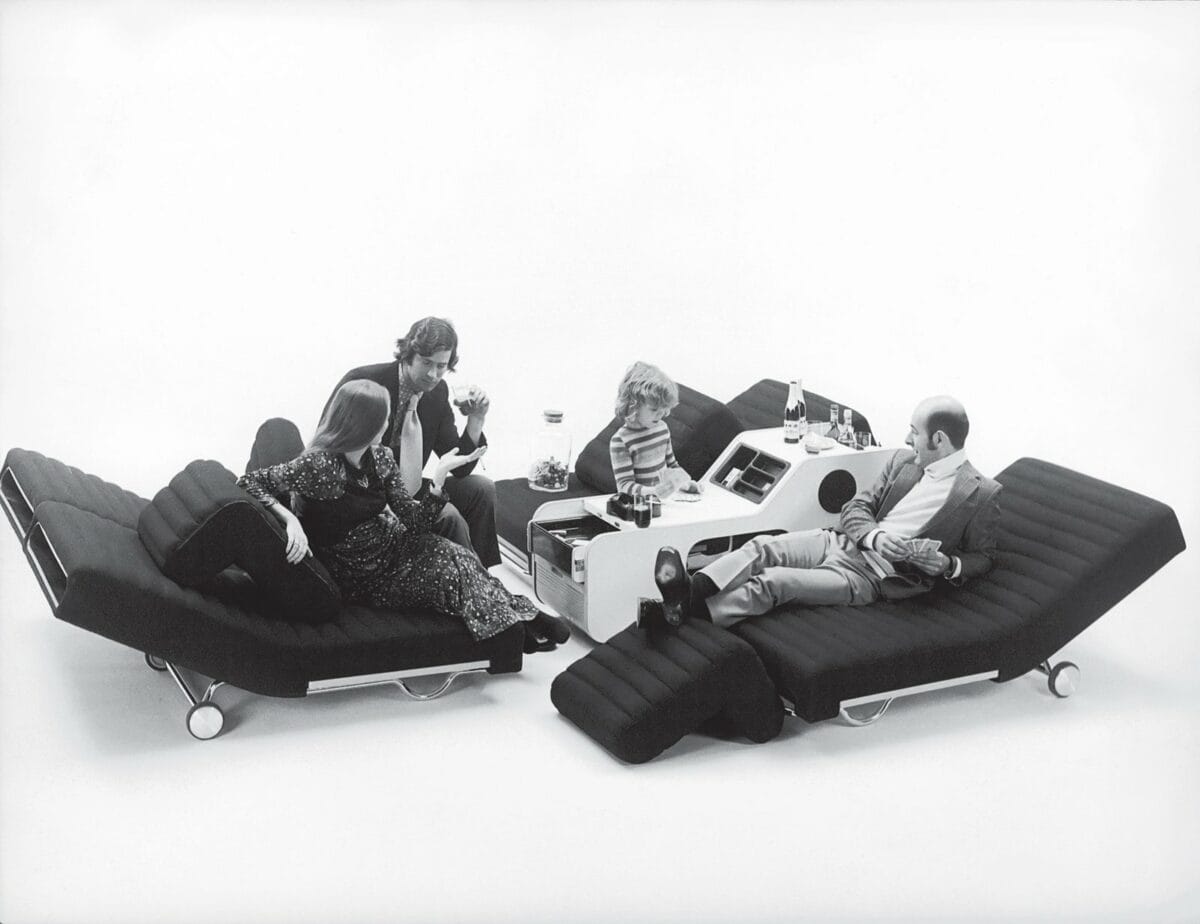The Big Design History
A century of international creative revolutions
A Century of Creative Revolutions
From the Constructivist revolution to design thinking algorithms, the history of international design reveals humanity’s extraordinary capacity to perpetually reinvent our daily environment. Each movement is born from a vision of the world, a social utopia, a technical innovation that transforms our relationship with objects and spaces.
In every curve of an Eames chair, every line of an iPhone, every pixel of an interface, resonate the dreams of generations of visionary creators. From Bauhaus to Silicon Valley studios, from Japanese minimalism to postmodern exuberance, design forges our collective identity and draws the contours of the future.
“Design is not just what it looks like and feels like. Design is how it works.” — Steve Jobs
Constructivism
The Russian revolutionary avant-garde
Born from the Russian Revolution, Constructivism redefined art and design as instruments for social transformation. Vladimir Tatlin, Alexander Rodchenko and El Lissitzky put geometry, industrial materials and function at the heart of creation.
- Philosophy: Utilitarian art serving society
- Aesthetic: Pure geometry, dynamic asymmetry, industrial assembly
- Legacy: Major influence on the Bauhaus and modern design
De Stijl
Dutch geometric abstraction
Piet Mondrian, Theo van Doesburg and Gerrit Rietveld pursued absolute harmony through straight lines, right angles and primary colors to create a universal language for art, architecture and furniture.
- Colors: Red, blue, yellow + black, white, gray
- Forms: Orthogonal grids, balanced asymmetry
- Design: Rietveld’s Red & Blue Chair (1918)
Bauhaus
The German modern revolution
Founded by Walter Gropius, the Bauhaus united art, craft and industry. Marcel Breuer and Mies van der Rohe forged a rational, functional, democratic design that still shapes our world.
- Method: “Form follows function”
- Icons: Wassily chair, Barcelona chair, tubular steel
- Impact: Mass production, accessible beauty
Art Deco
Global geometric elegance
From the 1925 Paris Exhibition to New York’s skyline, Art Deco reconciled modern geometry and ornamental luxury with exceptional craftsmanship and precious materials.
- Motifs: Sunbursts, chevrons, ziggurats
- Materials: Lacquer, exotic veneers, chrome, glass
- Scope: Architecture, furniture, jewelry, graphics
Streamline Moderne
American aerodynamism
In the U.S., Raymond Loewy, Henry Dreyfuss and Norman Bel Geddes translated the cult of speed into aerodynamic forms for trains, cars, appliances and commercial architecture.
- Forms: Fluid lines, rounded corners, speed profiles
- Materials: Stainless steel, chrome, Bakelite
- Uses: Transport, appliances, roadside architecture
Cranbrook School
The American laboratory
Founded by Eliel Saarinen, Cranbrook trained Charles & Ray Eames, Eero Saarinen, Florence Knoll and more — a crucible of experimentation and industry-designer collaboration.
Mid-Century Modern
The American golden age
Neutra, Eichler, Nelson and the Eames defined optimistic postwar modernity with clean lines, organic volumes, interior-exterior continuity and mass-produced comfort.
Good Design
Democratic aesthetics
From MoMA’s program to Braun and Italian masters, “good design” set ethical criteria for simplicity, usefulness, durability and honest materials.
Italian Design
Creative dolce vita
Gio Ponti, the Castiglioni brothers and Ettore Sottsass fused technical invention, poetic form and sensual materials — Milan rising as global design capital.
Ulm School
Bauhaus’s heir
Max Bill and Otl Aicher developed a scientific, systemic approach to design — methodology that would shape corporate identity, product systems and UX logic.
Pop Design
The colorful revolution
Joe Colombo, Verner Panton and others embraced plastics, vivid palettes and playful modularity to democratize a joyful, optimistic domestic landscape.
Radical Design
Italian anti-design
Sottsass, Pesce, Archizoom and Superstudio challenged consumerism with conceptual furniture, inflatable forms and utopian architectures.
High-Tech
The technological era
Norman Foster, Richard Rogers and Mario Bellini celebrated structure and engineering as aesthetics — glass, steel and exposed systems as a language of precision.
Postmodernism
Embraced eclecticism
Venturi, Graves and Starck rejected austere functionalism, reintroducing irony, color and historical references — “Less is a bore.”
Memphis Group
The postmodern explosion
Ettore Sottsass and the Memphis collective detonated color, pattern and geometry, rewriting the codes of furniture and objects with pop irony.
Minimalism
Global “less is more”
From Pawson to Ando, Minimalism distilled form, light and material into serene essentials — a discreet luxury that shaped 21st-century aesthetics.
Digital Design
The age of interfaces
Apple, IDEO and Frog Design shifted focus to UX/UI, interaction and services: screen-based ecosystems where use drives form.
Eco-Design
Environmental consciousness
From cradle-to-cradle to biomimicry, eco-design pursues circularity, repairability and regenerative materials — reshaping luxury and mass industry alike.
Design Thinking
The revolutionary method
Stanford/IDEO’s user-centered process — empathize, define, ideate, prototype, test — became a universal innovation toolkit across sectors.
Global Design
Creative globalization
From São Paulo to Lagos and Tokyo to Mexico City, new hubs and glocal practices mix cultures, craft and technology into a planetary design language.
From Art Nouveau and the Wiener Werkstätte to De Stijl (1917) and the Bauhaus (1919–1933), the avant-gardes laid the foundations of Modernism: the alliance of arts and industry, standardization, and honesty of materials. The 1925 Exposition launched Art Deco, which spread its geometric lines and rational luxury into the 1930s.
A decade of war and post-war years: constraints, rationing, and reconstruction directed design toward the utilitarian, the economical, and the dismantlable. In the United Kingdom, the Utility Furniture program set sober standards; in the United States, research into molded plywood (Eames splints 1942–45) prepared the way for the iconic chairs of the 1950s. In France, Jean Prouvé developed structures in bent sheet metal, easy to assemble. Streamline Moderne extended its fluid forms into consumer goods.
The triumph of International Modernism and Mid-Century: Eames, Prouvé, Jacobsen, Castiglioni. Plastics, molded plywood, aluminum, and mass production provided rationalized comfort and a clear aesthetic. Design entered everyday life and shaped an accessible art of living.
Postmodern reactions and plurality: Memphis (1981) challenged conventions, High-Tech exposed structures, and Minimalism (Japan/Italy) distilled forms. Computer-Aided Design (CAD) and the first 3D renderings transformed the way objects were conceived and produced.
Digital convergence: hardware-software ecosystems, UX/UI, and services. Additive manufacturing, parametric design, and advanced materials; the rise of circular design and sustainability. Smartphones, and later AI, redefined our habits and the entire design process.
Resources
Design Fundamentals
The Big Design History
From baroque salons to the radical lines of the 20th century, this timeline highlights the aesthetic revolutions that have shaped our everyday environment.
Read the page “The Big Design History”Hart Dictionary of Great Design Names
This dictionary lists the great names of design and decoration in alphabetical order. Discover the creators who have shaped contemporary art de vivre.
Read the page “Hart Dictionary of Great Design Names”History of Classic French & European Decorative Styles
Empire, Regency, Louis XV, Art Deco… This guide summarizes the decorative codes of each major European style.
Read the page “History of Classic French & European Decorative Styles”Hart Design Glossary A–Z
Sabre leg, patina, trimmings, caning… This glossary explains the technical and stylistic terms commonly used in the world of design and decoration.
Read the page “Hart Design Glossary A–Z”
